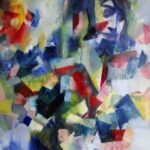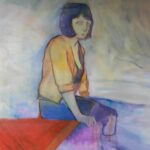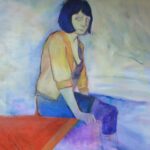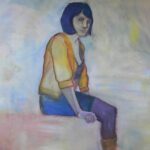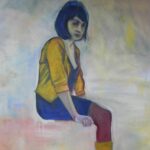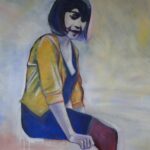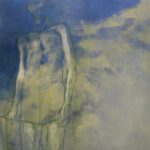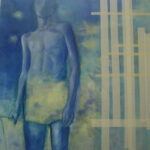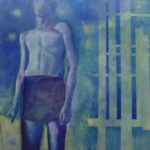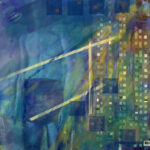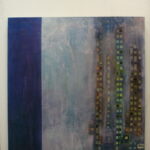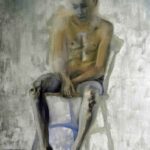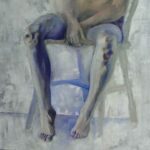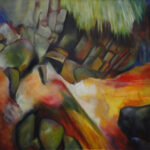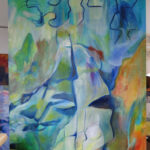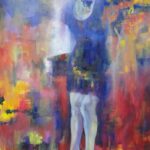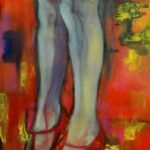Work in progress; oil on canvas, 32"x40".
I thought I might as well acknowledge that I spend almost as much time ruining paintings as I do making them. It would be nice to romanticise the artist as some sort of Siva-like being embodying both creation and destruction, but really any painter is really just an entity of pure ego. I paint over things because they don’t live up to the standards I imagine myself capable of. I think they don’t represent what I can do. Other things I don’t paint over, because I imagine they have some quality that deserves protection. Alright, maybe that doesn’t actually look like a leg, per se, if one is being pedantic, but perhaps it has some intangible beauty that I, irrationally, want to preserve.
The painting above is a failed portrait. I haven’t totally given up on it, but nor have I done any real work on it in several years. It was actually varnished and hung in an exhibition, and then I gave it away because it was too flawed to sell. And then I stole it back about a year later, because I was too embarrassed to leave it as it was. I literally took it off someone’s wall and carried it home. I stripped off the varnish and rubbed out the parts that were most offensive and now it’s been sitting my studio for months while I try to figure out how to fix it. The only part I really like are the legs. I’m really proud of those knees. I don’t know why. Do they look like knees? No. They do not. But there’s something satisfying about the colours, the shadows, the general knobblyness. They’re mighty knees. I had an excellent model, a bony adolescent boy, mid growth-spurt. He recently had to go to a physiotherapist because of trouble with those marvellous knees. It turned out he had extremely tight hamstrings because his legs were growing faster than his muscles. Literally, his bones were growing too fast for his flesh to catch up.
That’s neither here nor there, really, except that sometimes I feel that way about painting. In some parts of this picture, I got way ahead of myself, perhaps those knees were a fluke and it’s only after all this time that I’m technically capable of bringing the rest of the piece up to the same standard. We’ll find out, I suppose.

